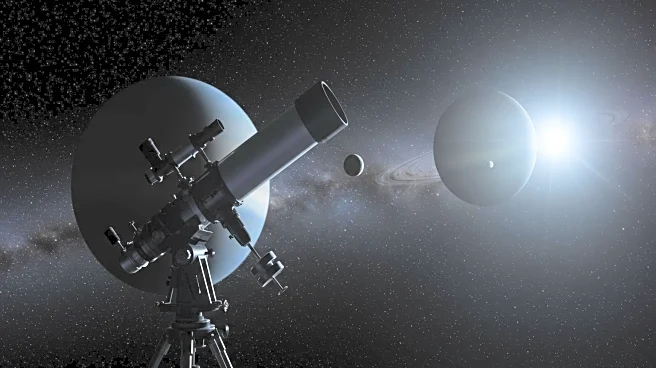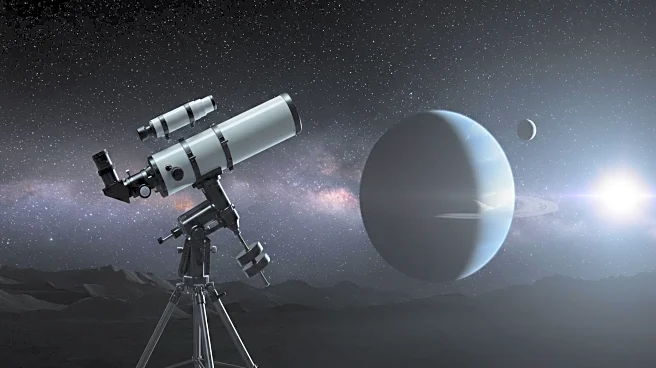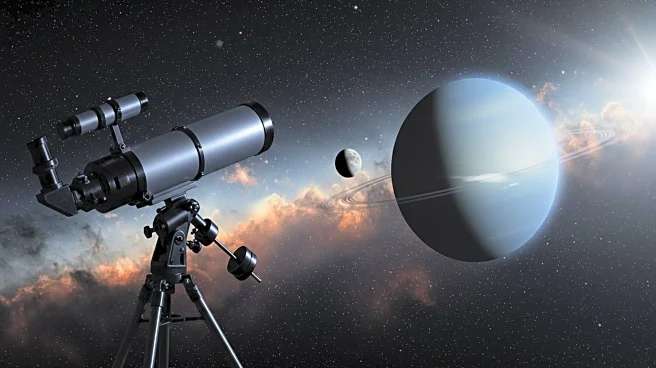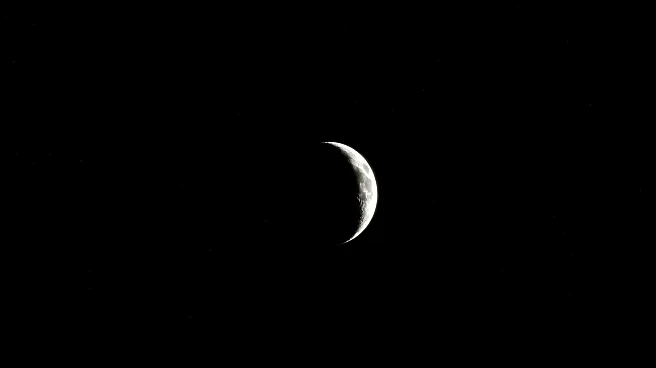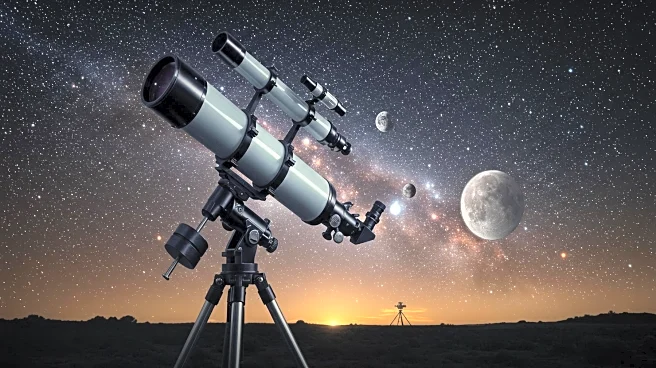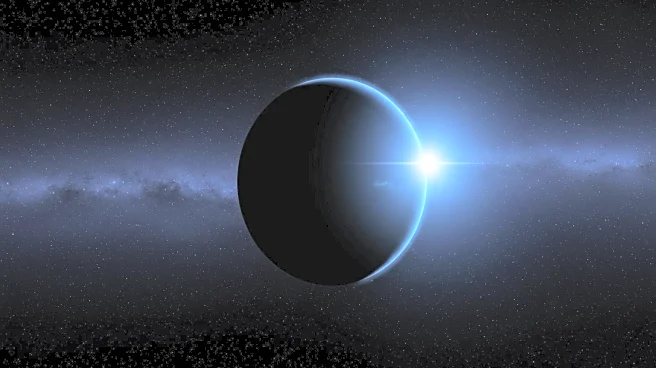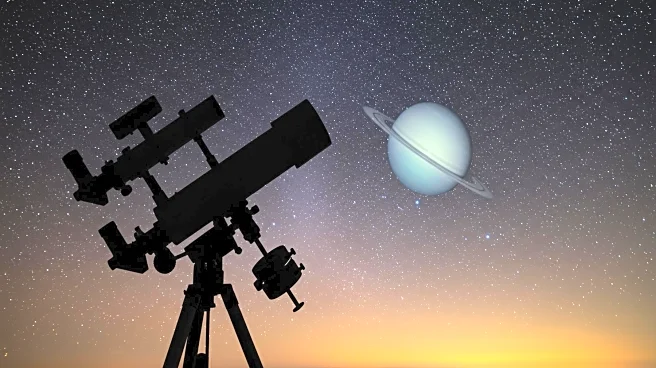What's Happening?
NASA's James Webb Space Telescope (JWST) has discovered a new moon orbiting Uranus, marking a significant advancement in space exploration. The moon, temporarily named S/2025 U1, is approximately six miles in diameter. This discovery highlights the JWST's ability to detect faint celestial bodies, expanding our understanding of planetary ring and moon systems in the outer Solar System. The finding suggests the possibility of more undiscovered moons around Uranus, contributing to the knowledge of the planet's complex history.
Why It's Important?
The discovery of a new moon around Uranus is crucial for astronomers as it provides insights into the dynamics and evolution of planetary systems. Understanding the composition and behavior of moons can help scientists learn more about the formation and history of planets. The JWST's ability to detect such small and faint objects demonstrates its revolutionary capabilities, paving the way for future discoveries in outer planetary systems. This could lead to a deeper understanding of the chaotic and complex history of Uranus's moons and rings.
What's Next?
The discovery opens up new avenues for research into Uranus's moon system. Scientists may conduct further observations to determine the moon's composition and orbit, which could reveal more about the planet's history. The JWST will continue to explore the outer Solar System, potentially uncovering more celestial bodies. This could lead to collaborations with other space agencies and institutions to study the implications of these findings on planetary science.
